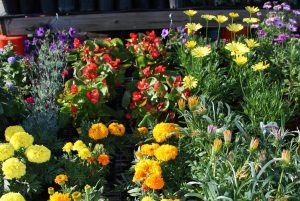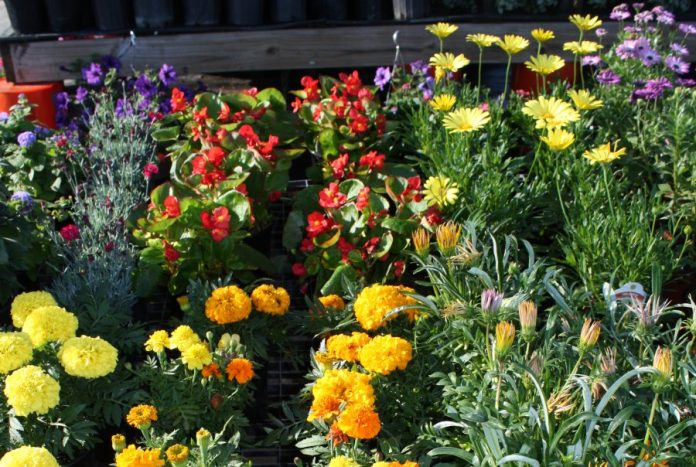 The temperature of the air and ground surrounding a plant affects the way it grows and produces. An important factor is whether the plant itself requires a warm or cool growing season.
The temperature of the air and ground surrounding a plant affects the way it grows and produces. An important factor is whether the plant itself requires a warm or cool growing season.
Lettuces get a charge out of nippy February and March days and nights, while tomatoes, for example, straggle along until the days are consistently warm after April 15. Here are some thoughts to consider.
Tomato plants remain stumpy, and for the most part don’t set fruit in unvaried cool weather. Lettuces bolt to make flowers– and turn bitter to the taste– until the heat of tomato weather hits.
Among flowers, mums are happy campers when daytime temperatures are around 60-degrees. And, here’s a surprise, those potted cyclamens—the ones that appear in the stores around Christmas–like it chilly, too.
Horticulture professionals call the range of temperatures in 24 hours the day’s thermoperiod. A rule of thumb is– most plants perform best when daytime temperatures are 10- to 16-degrees higher than nighttime temperatures. They’re going to cringe when a 70-degree day plummets to a 30-degree night, as it frequently does in January.
Crudely speaking, our green friends cook-up sugars during the day, then take a breather to exchange gases, or “respire,” after the sun goes down. They inhale carbon dioxide and exhale oxygen. People do just the opposite, right?
Plant oxygen is left over from making sugar during photosynthesis. If hot weather causes a plant to breathe (respire) faster than it cooks (photosynthesizes), it can run out of gas, so to speak. This imbalance impairs health and growth.
North Texas vegetable gardeners see the phenomenon clearly in July and August, when many vegetable plants struggle with wilting; and, stop flowering and consequently setting fruits. Some yellow, then give-up the ghost.
Low temperatures can also put the brakes on photosynthesis, which also hampers growth and fruiting. Plants are not one-size-fits-all where weather is concerned; some flourish in warm weather and others like cold weather. The gardener’s job is to figure out what’s what.
The USDA (United States Department of Agriculture) map of “hardiness zones” helps us determine which plants will best withstand the range of air and soil temperatures where we live. Texas has four temperature zones, with sub-zones stretching from the high plains up north to the subtropical coast and citrus tree-friendly Rio Grande Valley.
Peach trees, for example, require a certain number of cold weather hours each year in order to flower and set fruit. We may plant any variety of peach trees we like, but doing our hardiness zone homework will prevent a lot of production disappointment later. Did you know different varieties have different cooling requirements? Your Denton County Extension Agent can help you figure out what will work best in your location.
Flower gardeners learn lilies need six-weeks of 33-degree weather a year before they will bloom. Those gorgeous Asiatic lilies are hard to grow here, but daylilies love the area. Non-hardy plants can be injured by too-low or too-high temperatures, which restrict water intake.
Premature budding often follows an out-of-season warm spell, after which the plant may get slammed by normal seasonable cold weather. On the other hand, at one time or another, most gardeners experience a late-spring killer frost.
April 15 is the late-frost date for our latitude. If you plant warm weather vegetables before that, have a frost-guard plan ready. That date, however, is not foolproof. Six years ago, I jumped-the-gun then planted tomatoes three-times. That spring lives on in my personal history!
(Contact the writer at [email protected])










 GIF.gif)





